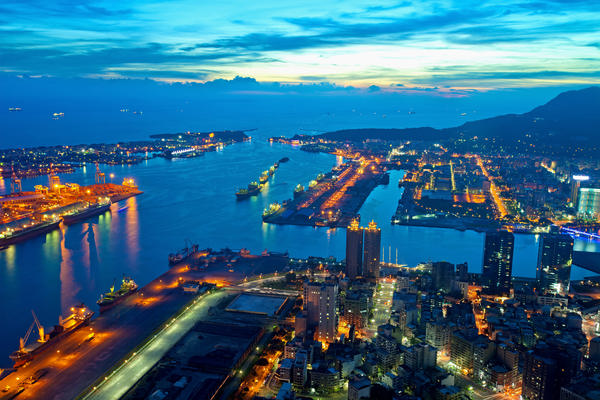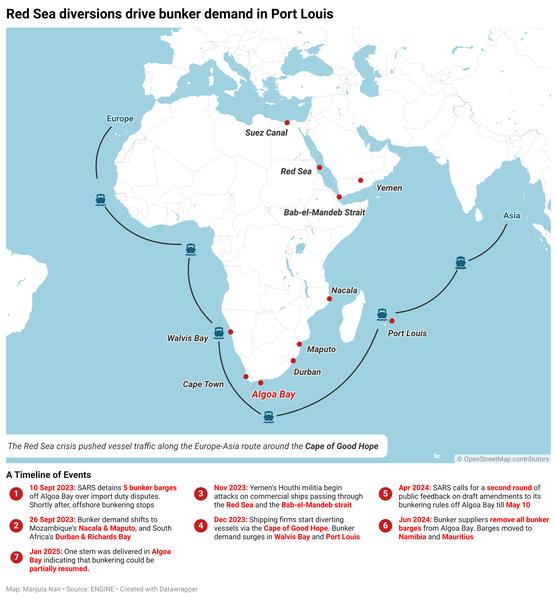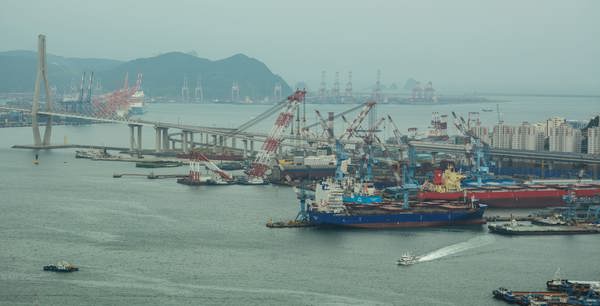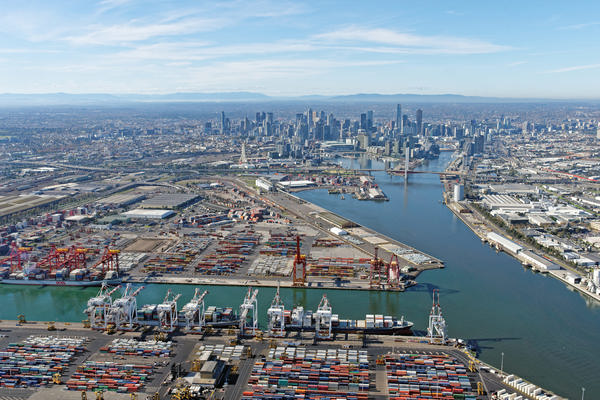Red Sea diversions drive Maersk’s fleet emissions higher in 2024
Danish shipping firm A.P. Moller-Maersk reported a significant 5.8 million mt CO2-equivalent/year (mtCO2e/year) increase in absolute greenhouse gas (GHG) emissions from its ocean operations in 2024.
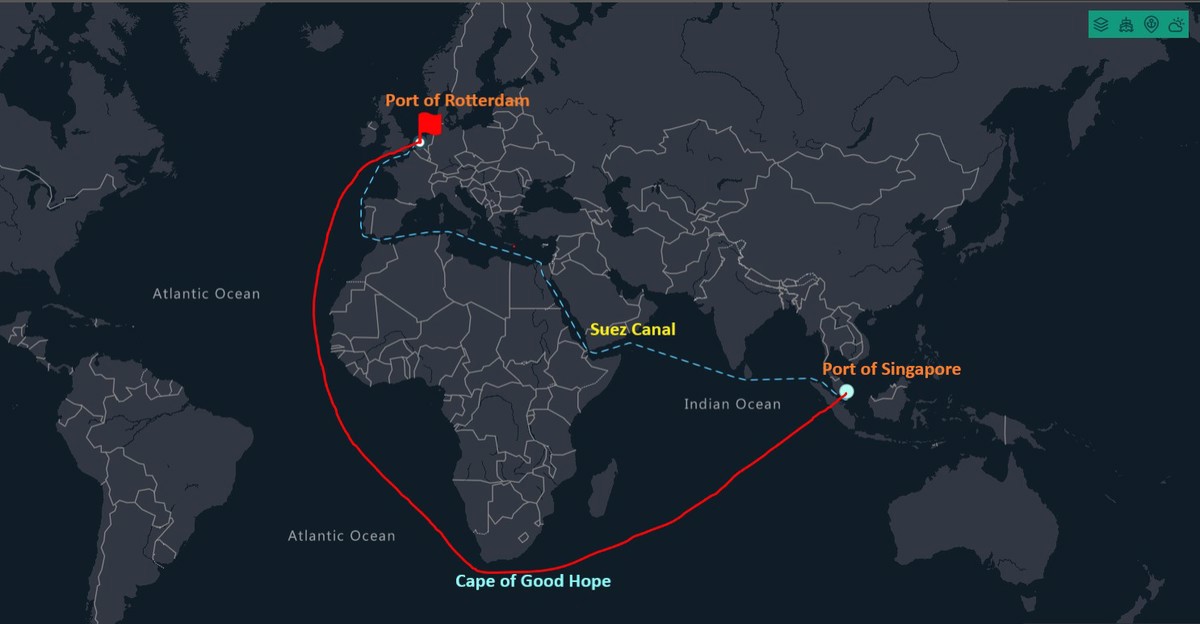 PHOTO: Two different shipping routes from Singapore to Rotterdam. The shorter one runs via the Suez Canal, the longer around the Cape of Good Hope. ENGINE
PHOTO: Two different shipping routes from Singapore to Rotterdam. The shorter one runs via the Suez Canal, the longer around the Cape of Good Hope. ENGINE
Absolute GHG emissions across its fleet for 2024 rose to 83.5 million mtCO2e/year, an increase of approximately 1 million mtCO2e/year compared to the 2022 baseline of 82.8 million mtCO2e/year.
“This was mainly driven by the Red Sea situation that continued to re-route vessels around the Cape of Good Hope in 2024, with knock-on capacity shortages and port congestion, requiring faster sailings to keep the Asia-Europe supply chains running,” the company in its annual report.
Longer route, higher emissions
Several container liners, including Maersk, began diverting vessels around the Cape of Good Hope in November 2023 due to Houthi attacks on commercial ships transiting the Red Sea.
The Singapore-Rotterdam shipping route via the Cape of Good Hope is over 3,000 nautical miles longer than the Suez Canal route across the Red Sea, which spans approximately 8,000 nautical miles.
ENGINE calculations show that a vessel sailing at 12 knots will take around 30 days to reach Rotterdam from Singapore via the Suez Canal. The same voyage via the Cape will take 10 days longer, leading to higher fuel consumption and increased emissions.
Despite the rise in emissions, Maersk recently said that it will continue using the longer Cape route due to ongoing security risks, even after the Israel-Hamas ceasefire. The company cited the lack of a phased roadmap to resolve the conflict as a key reason for avoiding the Red Sea.
It expects to resume Red Sea transits by mid-2025, depending on the geopolitical situation. The company has also set a target to lower absolute GHG emissions across its fleet to 59.8 million mtCO2e/year by 2030, a sharp 23 million mtCO2e/year decrease from the 2022 baseline.
By Konica Bhatt
Please get in touch with comments or additional info to news@engine.online

Contact our Experts
With 50+ traders in 12 offices around the world, our team is available 24/7 to support you in your energy procurement needs.

